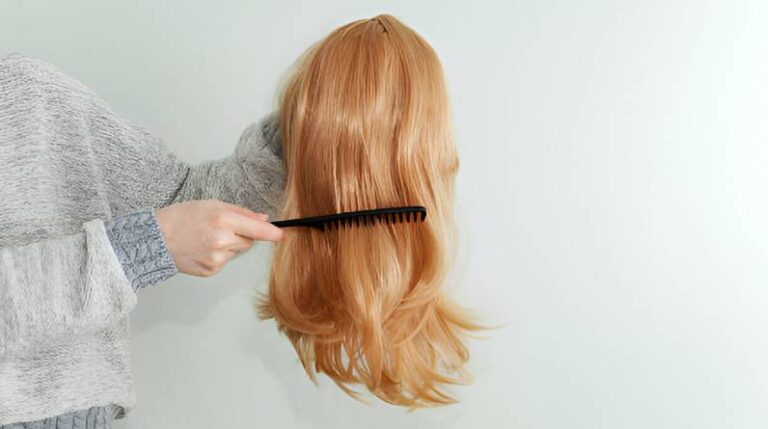Wearing a wig for the first time can be both exciting and a little intimidating. Whether you’re exploring wigs for fashion, dealing with hair loss, or simply ready for a new look, knowing how to put one on properly makes all the difference. The right technique helps your wig stay secure, look natural, and feel comfortable all day long.
This comprehensive beginner’s guide walks you through everything you need to know—from understanding wig types to prepping your natural hair, securing your wig, and styling it with confidence.
Step 1: Choose the Right Type of Wig
Before you put on a wig, it’s important to select a style that fits your needs, comfort level, and desired appearance. Here are the most popular wig types and why beginners love them:
Full Lace Wigs
- Best for: Maximum styling flexibility
- Pros: You can part your hair anywhere and wear styles like ponytails or buns.
- Consider: These require delicate handling and often a bit more skill to install.
Lace Front Wigs
- Best for: A natural-looking hairline with easy wear
- Pros: Blends seamlessly at the front and works well for casual everyday styles.
- Consider: Limited updo options, since only the front has lace.
U-Part Wigs
- Best for: Blending with your natural hair
- Pros: You leave some of your own hair out at the top for a seamless look.
- Consider: Requires color and texture matching with your real hair.
HatFall Wigs
- Best for: Simple, lightweight coverage with headwear
- Pros: Designed to be worn under hats or scarves—great for quick styling.
- Consider: Not ideal for formal or exposed hairstyles.
Silk or Skin Top Wigs
- Best for: Realistic scalp appearance
- Pros: Mimics natural hair growth and conceals wig knots.
- Consider: Slightly heavier due to extra material.
Step 2: Prep Your Natural Hair for a Smooth Fit
Creating a flat, secure base underneath your wig is essential. Here’s how to prep based on your hair length:
For Short Hair
- Brush your hair back and pin it flat against your scalp.
- Use bobby pins and a touch of hairspray to tame flyaways.
For Long Hair
- Create two French braids, wrap them around your head, and pin them flat.
- Alternatively, use pin curls or a low ponytail tucked up and secured with clips.
For No Hair or Very Short Hair
- A wig cap can improve comfort and grip by creating a smooth barrier between your scalp and the wig.
Step 3: Use a Wig Cap or Wig Grip (or Both!)
Both wig caps and wig grips can help your wig stay in place. Which you choose depends on your comfort and preference:
- Wig Cap: Ideal for flattening hair and creating a clean base. Particularly helpful for those with hair.
- Wig Grip: A velvety band worn underneath the wig to hold it securely without clips or glue. Great for sensitive scalps or quick changes.
- Combo Option: Some beginners find that using both offers extra stability.
Step 4: How to Put On a Wig—Step-by-Step
Ready to try it on? Here’s the best way to put on a wig correctly:
- Hold the wig at the nape (back). The label inside the wig should be at the base.
- Tilt your head slightly forward. This helps the wig settle into place naturally.
- Place the front of the wig at your natural hairline.
- Slide the wig back over your head until it rests comfortably at the nape.
- Adjust the wig until it feels even on both sides, using the ear tabs as guides.
Step 5: Adjust for Fit, Comfort, and Natural Look
Once the wig is on:
- Check alignment: Ear tabs should sit evenly on both sides.
- Secure it: Use built-in adjustable straps inside the cap to customize the fit.
- Tuck or blend: Tuck in any stray hairs or blend your natural hair (if exposed) with a comb or styling brush.
Step 6: Secure the Wig Without Glue
Want your wig to stay secure all day—no glue or mess? Try these beginner-friendly methods:
- Wig grip bands – Provide non-slip hold and all-day comfort.
- TopGrip or GripCap – Great alternatives for those sensitive to tight caps.
- Sew-in adjustable straps – Can be added to most wigs for a custom, snug fit.
Step 7: Blend and Style for a Natural Finish
Make your wig look like your own hair with a few final touches:
- Blend edges: Smooth out any visible natural hair at the hairline or part.
- Customize the part: Use a little powder or concealer to match the scalp color to your skin tone.
- Use light styling: Brush gently or apply wig-friendly products to enhance texture or shape.
Pro Tip: New wigs often benefit from a visit to a stylist. A light trim or layering can personalize the look to better suit your face shape.
Bonus Tips for First-Time Wig Wearers
- Practice at home first: Give yourself time to learn how to put on your wig before wearing it out.
- Take breaks: Especially if you’re not used to wigs, ease into wearing them for extended periods.
- Store it properly: Place your wig on a stand when not in use to maintain its shape and style.
Frequently Asked Questions
Do I need a wig cap?
Not always. Wig caps help flatten natural hair and add comfort, but some people prefer wig grips or wear wigs without any base layer at all. Test different options to find your best fit.
How can I make my wig look more natural?
Align it carefully at your hairline, blend with makeup or powder, and consider trimming or styling it to suit your face. Natural movement and confidence go a long way, too.
How do I keep my wig from slipping?
Make sure the straps inside the wig are snug, and consider a wig grip or sewn-in adjustable strap for extra security.
Confidence Starts at the Crown
Putting on a wig for the first time can feel like a big step, but with the right approach, it quickly becomes second nature. By choosing the right type of wig, prepping your hair, securing your foundation, and styling with care, you’ll feel comfortable, confident, and totally yourself.
Whether you’re experimenting with a new look or stepping into wig-wearing for health reasons, remember: how you wear your hair is your choice—and it’s a powerful form of self-expression.
For more insightful articles and the latest updates, keep visiting Hacoo.

